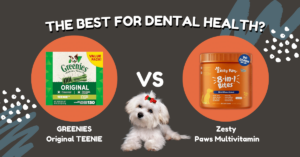I. Introduction
Hypoallergenic dogs are gaining immense popularity among pet owners, especially those who suffer from allergies. In this article, we will explore the concept of hypoallergenic dogs, their benefits, and popular breeds that are considered “must-have” pets for individuals with allergies.
II. Understanding Hypoallergenic Dogs
Hypoallergenic dogs are breeds that produce fewer allergens compared to non-hypoallergenic dogs. While no dog is completely hypoallergenic, these breeds have lower allergen levels in their dander, saliva, and urine. It’s important to note that allergen levels can vary within each breed and even among individual dogs.
There are several misconceptions and myths surrounding hypoallergenic dogs. One common misconception is that they are completely allergen-free, which is not true. However, they can be a better option for individuals with allergies compared to non-hypoallergenic breeds.
Hypoallergenic dogs possess specific characteristics and traits that make them suitable for individuals with allergies. They have hair instead of fur, which means they shed less dander, the main allergen produced by dogs. Additionally, they tend to have less saliva and urine, which further reduces the allergen levels.
III. Benefits of Owning Hypoallergenic Dogs
Owning a hypoallergenic dog can have numerous health benefits for individuals with allergies. One of the key benefits is a reduced risk of allergies and asthma attacks. The lower allergen levels in hypoallergenic dogs can minimize the allergic reactions and respiratory issues often associated with pet allergies.
In addition to the physical health benefits, hypoallergenic dogs can also improve mental well-being and reduce stress for allergy-prone individuals. The companionship and emotional support provided by these dogs can have a positive impact on mental health, especially for those who may be restricted in owning pets due to allergies.
Hypoallergenic dogs can also be great companions for families, children, and seniors. Their low allergen levels make them a safer option for households with allergy-prone members, and their friendly and affectionate nature can bring joy to people of all ages.
IV. Popular Breeds of Hypoallergenic Dogs
Several breeds are considered “must-have” hypoallergenic dogs due to their low allergen levels and other desirable traits. Some of the most popular breeds include Poodle, Bichon Frise, Maltese, and Shih Tzu.
Poodle: Poodles are known for their curly hair that doesn’t shed much, reducing the spread of dander. They come in different sizes, including toy, miniature, and standard, making them suitable for various living spaces. Poodles are intelligent, trainable, and have a friendly temperament, making them excellent family pets.
Bichon Frise: Bichon Frise is a small breed known for its fluffy coat that doesn’t shed much. They have a cheerful and friendly personality, and their size makes them ideal for apartment living. Bichon Frise are also known for their playful nature and get along well with children and other pets.
Maltese: Maltese is a toy breed with a long, silky coat that is low-shedding. They are small in size, making them suitable for small living spaces. Maltese are affectionate, gentle, and have fearless personalities, making them great lap dogs and companions for seniors.
Shih Tzu: Shih Tzu is a small breed with a long, flowing coat that requires regular grooming to prevent matting. They have a friendly and outgoing personality, and they get along well with children and other pets. Shih Tzu isa is known for their loyalty and affection towards their owners, making them great companions.
V. Tips for Allergy-Prone Pet Owners
While hypoallergenic dogs may produce fewer allergens compared to other breeds, it’s important to note that no dog is completely allergen-free. Here are some tips for allergy-prone pet owners to minimize allergic reactions:
Choose the right breed: Research and choose a hypoallergenic breed that suits your lifestyle and living situation. Consider factors such as size, exercise needs, and temperament to ensure a good match.
Regular grooming: Regular grooming is essential to keep the coat of your hypoallergenic dog clean and reduce dander. Brushing, bathing, and trimming the coat can help minimize shedding and allergens.
Clean your home: Keep your home clean and allergen-free by vacuuming regularly, using air purifiers with HEPA filters, and washing your dog’s bedding and toys regularly. This can help reduce the amount of dander and allergens in your home.
Wash your hands: Wash your hands thoroughly with soap and water after handling your dog to remove any allergens from your skin.
Avoid allergen hotspots: Avoid letting your dog on furniture or carpets, as these can be allergen hotspots. Designate certain areas in your home as pet-free zones to minimize allergen exposure.
Take care of your own health: If you have allergies or asthma, make sure to manage your condition properly with medication and regular check-ups with your healthcare provider.
Conclusion
In conclusion, hypoallergenic dogs can be a great option for individuals with allergies who want to experience the joy and companionship of owning a pet. While no dog is completely hypoallergenic, these breeds produce fewer allergens, making them a better choice for allergy-prone individuals. By choosing the right breed, regular grooming, keeping your home clean, and managing your own health, you can enjoy the benefits of owning a hypoallergenic dog without compromising your well-being. Always consult with your healthcare provider or allergist before getting a pet, and consider your own allergies and health condition when making a decision. With proper care and precautions, owning a hypoallergenic dog can be a wonderful experience for allergy-prone pet owners.
Frequently Asked Questions (FAQ) about Hypoallergenic Dogs
Q: What dogs don’t have a lot of dander?
A: Hypoallergenic dog breeds are known to produce fewer allergens and have less dander compared to other breeds. Breeds such as Poodle, Bichon Frise, and Maltese are often considered to have low dander levels.
Q: Which dog is best for asthma?
A: It’s important to consult with your healthcare provider or allergist before getting a dog if you have asthma. However, some hypoallergenic breeds such as the Bedlington Terrier and the Chinese Crested are often recommended for individuals with asthma due to their low allergen production.
Q: Is there a dog that doesn’t shed?
A: Yes, there are several dog breeds that are known for minimal shedding or do not shed at all. Breeds such as the Bichon Frise, Shih Tzu, and Yorkshire Terrier are known for their low-shedding coats.
Q: What is the #1 allergy for dogs?
A: The most common allergen for dogs is dander, which consists of tiny flakes of skin, hair, and saliva that dogs shed. Proteins found in dog dander can trigger allergic reactions in sensitive individuals.
Q: What is the #1 hypoallergenic dog?
A: There is no single “best” hypoallergenic dog breed, as it depends on individual preferences and allergies. However, some popular hypoallergenic breeds include the Poodle, Bichon Frise, and Maltese.
Q: Can I have a dog if I’m allergic?
A: It is possible to have a dog even if you are allergic, but it requires careful consideration and planning. Choosing a hypoallergenic breed, proper grooming, keeping your home clean, and managing your allergies with medication can help reduce allergen exposure.
Q: Can you live with a dog if you are allergic?
A: Yes, with proper care and precautions, it is possible to live with a dog even if you are allergic. Choosing a hypoallergenic breed, maintaining good hygiene, and managing your allergies can help minimize allergen exposure and allow for a harmonious living arrangement with your furry friend.
Q: What is a lazy hypoallergenic dog?
A: While energy levels can vary among individual dogs, some hypoallergenic breeds that are generally known for being more laid-back or less active include the Basset Hound, Bulldog, and Shih Tzu.
Q: What is the longest living hypoallergenic dog?
A: The lifespan of a dog depends on various factors such as breed, genetics, and overall health care. However, some hypoallergenic breeds known for their longevity include the Toy Poodle, Miniature Schnauzer, and Shih Tzu, which can live up to 15 years or more with proper care.
Q: What are the top 10 dog allergens?
A: The top 10 dog allergens include proteins found in dog dander, saliva, and urine, which can trigger allergic reactions in sensitive individuals. These allergens can vary among individual dogs and breeds.
Q: What is the cheapest dog that is hypoallergenic?
A: The cost of a dog can vary greatly depending on factors such as breed, size, and location. While there is no specific “cheapest” hypoallergenic dog, some smaller breeds such as the Chihuahua, Dachshund, and Pug are generally less expensive compared to larger breeds.
Q: Can you build up an immunity to dog allergies?
A: While it is possible for some individuals to develop a tolerance or immunity to dog allergies over time,









